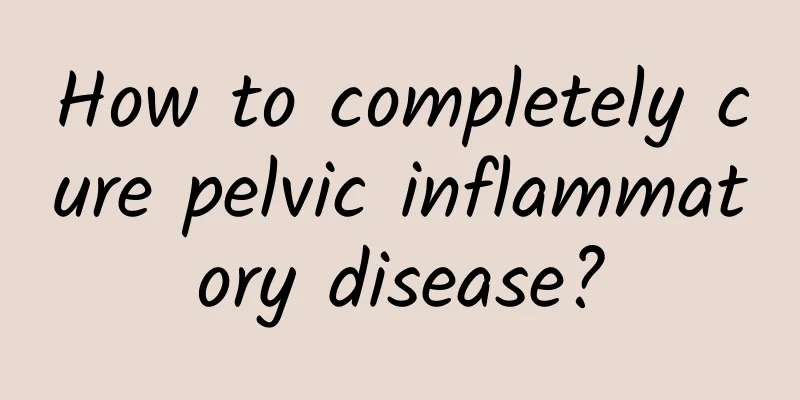Six major hazards of uterine fibroids that need attention

|
Although most uterine fibroids are benign tumors, if the treatment of uterine fibroids is neglected, it will cause the uterine fibroids to worsen, which is very harmful. What are the common hazards of uterine fibroids ? Here we will talk about the common hazards of uterine fibroids. In general, the common hazards of uterine fibroids are: 1. Free fibroids. Subserous uterine fibroids can twist at the pedicle, causing acute abdominal pain. In severe cases, if surgical treatment is not performed immediately, the pedicle may be broken and a free fibroid may be formed. Of course, the twisted fibroids can also drive the entire uterus, causing axial torsion of the uterus (mostly near the internal opening of the cervical canal). This is a common hazard of uterine fibroids. 2. Secondary anemia. Uterine fibroids can cause excessive menstrual bleeding. Over time, it can cause secondary anemia and even trigger anemic heart disease, which is also a common hazard of uterine fibroids. In severe cases, patients may experience general fatigue, pale complexion, palpitations, shortness of breath, and other adverse symptoms. 3. Malignant changes. Uterine fibroids are benign tumors, but a small number of women still cannot escape the risk of malignant changes (the rate of malignant changes is about 1%), which is particularly prominent in older women. It is a common type of harm caused by uterine fibroids. Therefore, those with rapidly growing fibroids or postmenopausal fibroids should be vigilant. 4. Infertility or miscarriage. This is also a common hazard of uterine fibroids. Uterine fibroids patients have fibroid tissue in the uterine corners compressing the entrance of the fallopian tube, causing the uterus to deform and hinder the implantation of the fertilized egg, ultimately leading to infertility. In addition, according to statistics, the spontaneous abortion rate of fibroid patients is also higher than that of ordinary people, with a ratio of 4:1. 5. Adhesion or inflammation. After the subserosal uterine fibroid pedicle is twisted, intestinal adhesion will occur, which will be infected by intestinal bacteria. The inflamed fibroid will adhere to the uterine appendages, causing suppurative inflammation. On the other hand, fibroids can also cause pathogenic bacteria to invade other uterine organs due to bleeding, causing gynecological inflammation such as adnexitis and pelvic inflammatory disease. 6. Infection and suppuration. Uterine fibroids can cause pelvic congestion and infection. The infection is mostly caused by the torsion of the tumor pedicle, while blood-borne infection is extremely rare. After infection, a few patients will form abscesses in the tumor tissue, while the rest will show suppuration. These are all hazards of uterine fibroids. The above is an introduction to the hazards of common uterine fibroids. I hope it will be helpful to everyone. Once you have uterine fibroids, you must go to the hospital for treatment in time to avoid missing the best time for treatment. |
<<: Introduction to six common symptoms of uterine fibroids
>>: Brief analysis of the main symptoms of malignant uterine fibroids
Recommend
What are the causes of dysmenorrhea?
Nowadays, many women have dysmenorrhea. In fact, ...
Women should know the nursing measures for ectopic pregnancy
In life, many people don't know much about ec...
What should I do if my period is yellow and has no blood on the first day?
What should I do if my period is yellow and has n...
Why does uterine fibroids cause low blood pressure and dizziness? Can uterine fibroids cause low blood pressure?
Why does uterine fibroids cause low blood pressur...
Why is cervicitis always difficult to cure? What complications can cervicitis cause in women?
Some women who have cervicitis actively go to the...
What are the symptoms of pelvic inflammatory disease?
As a common gynecological disease, pelvic inflamm...
Menstrual irregularities can be detected from changes in menstrual periods
As the name implies, the symptoms of irregular me...
Secret recipe of Chinese medicine for treating uterine fibroids
Secret recipe of Chinese medicine for treating ut...
Some characteristics of early uterine fibroids symptoms
The symptoms of uterine fibroids are difficult to...
How to prevent pelvic peritonitis
Small illnesses can have big impacts. Pelvic peri...
Kate Moss's body is big and her belly and buttocks are scary
British supermodel Kate Moss has never been afrai...
Common methods for diagnosing ectopic pregnancy
Ectopic pregnancy refers to pregnancy outside the...
What is chronic adnexitis? What are the symptoms?
Chronic adnexitis is a gynecological disease that...
After a big meal, your stomach bulges like a pregnant woman? Fitness coach teaches 3 ways before going to bed to strengthen the transverse abdominal muscles and say goodbye to fat belly
When a few friends get together for a meal, they ...
Traditional Chinese Medicine for Menopause
If menopause is not treated in time, it may cause...









